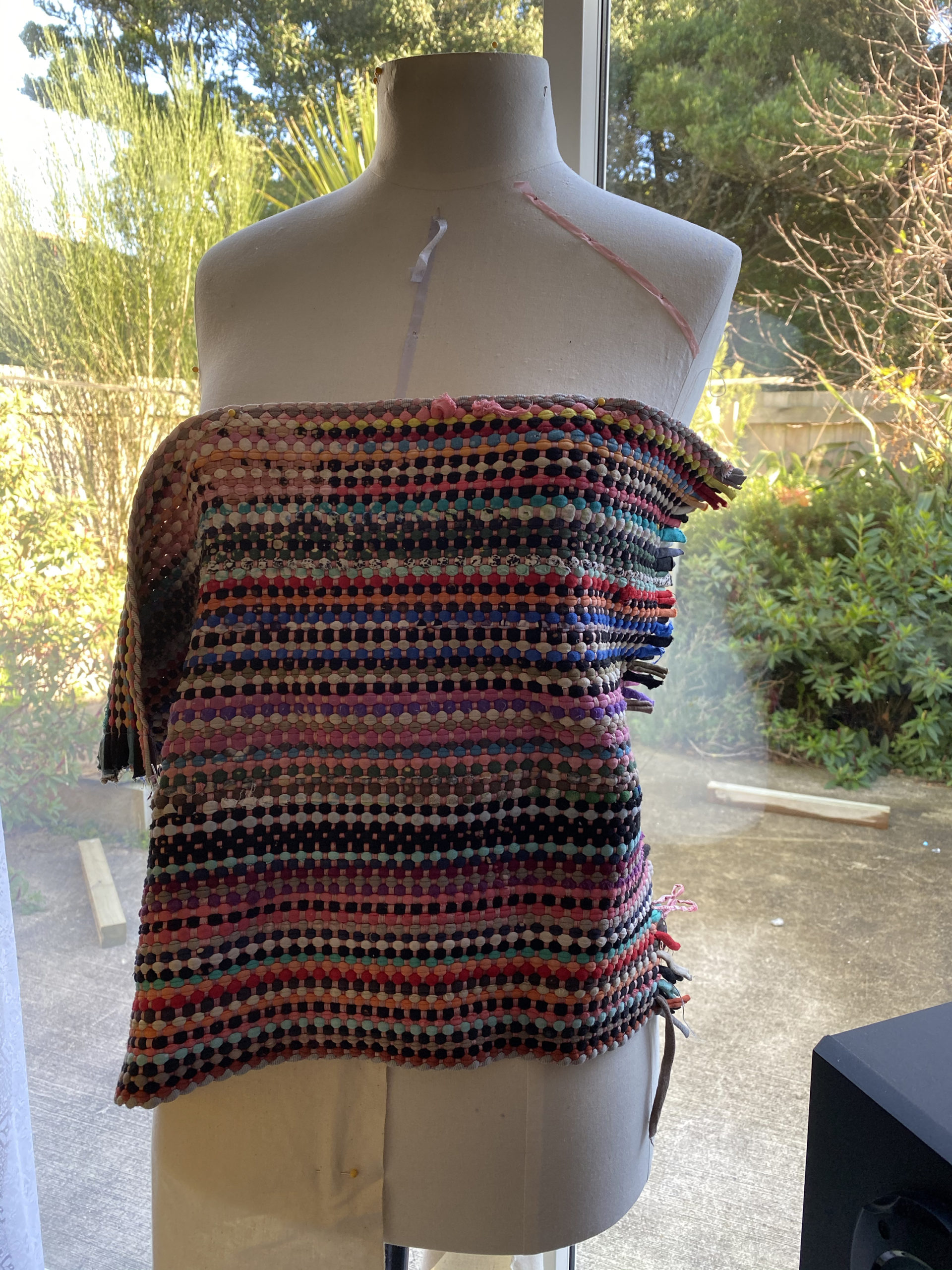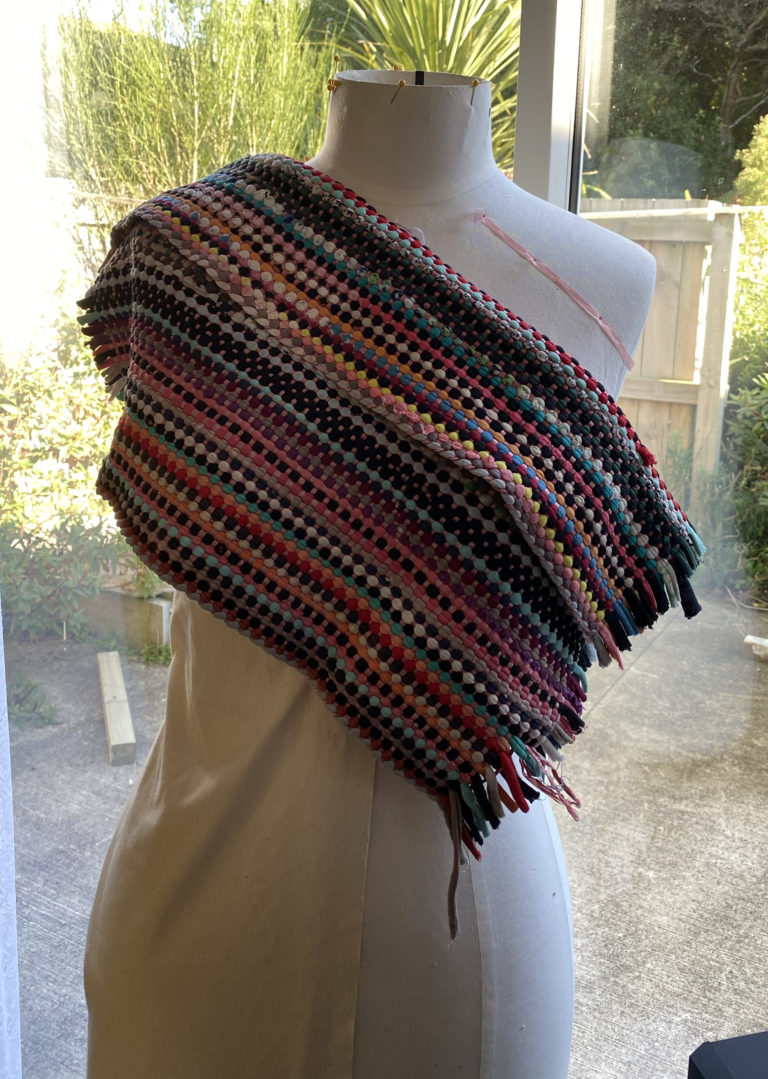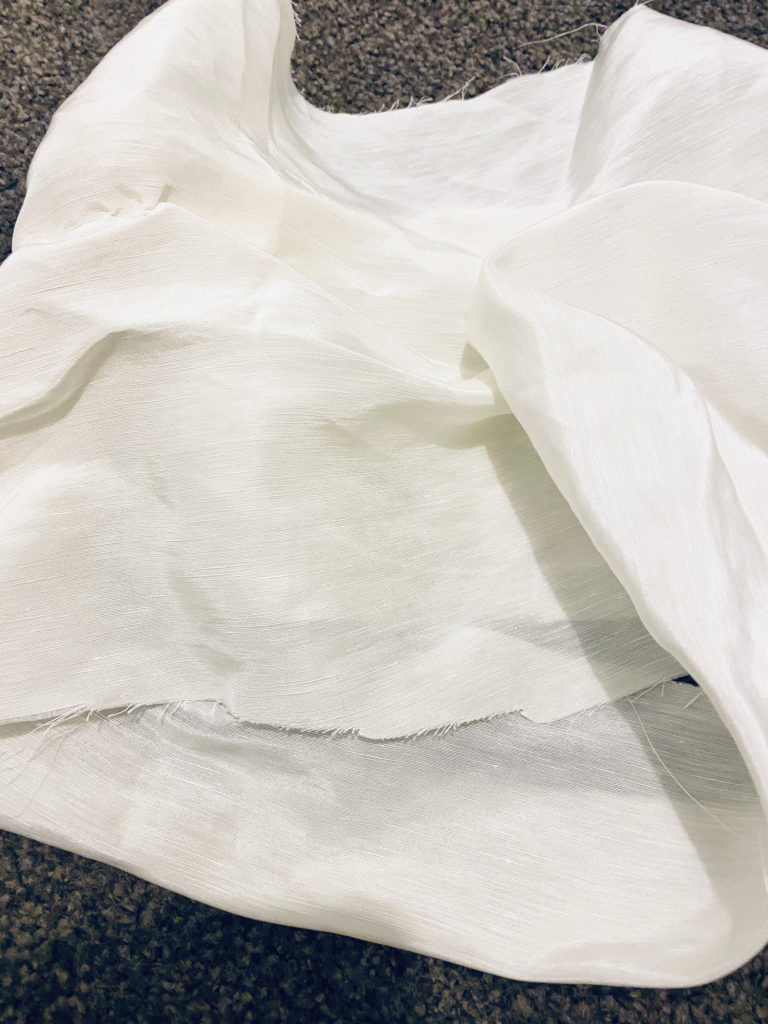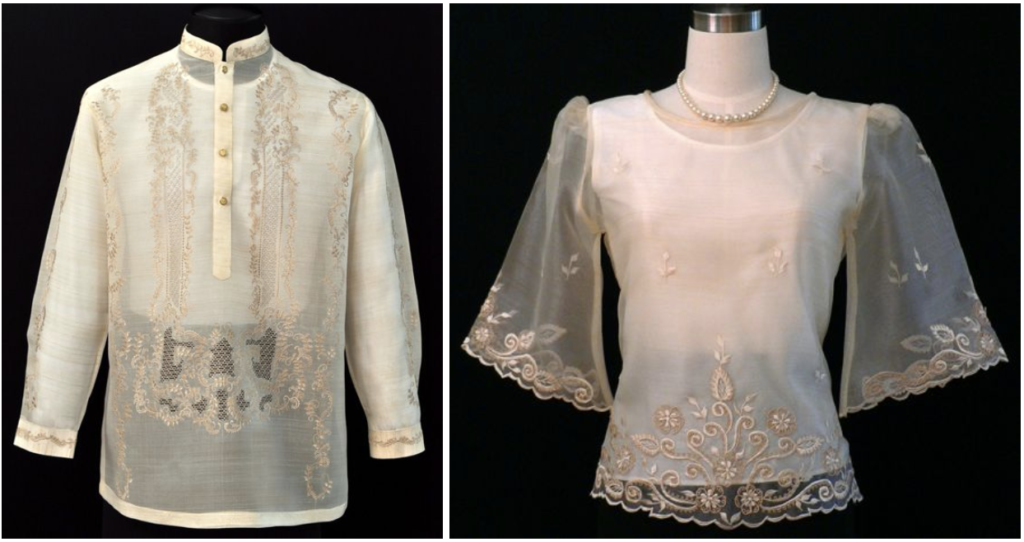Fabrics to Use
Main Fabric
There isn’t much choice of fabrics I needed for this project. The main reason is that the fabric, for the most part, will be woven and made by hand using old clothes. I have with me a full bag and a box of old clothes ready to be used as this is often how this rag weaving is often done. If not old clothes, the leftover fabric is used. I have here pictured the general idea of what the fabric will look like. However, the color won’t be exactly the same as what is pictured as it depends on what is made available. The majority of it will be black and white, and mostly red is the main color. But it will be blended with what’s available.
Second Main Fabric
The second main fabric is what the layering dress and first look will be made of. While this is designed with the piña fabric in mind, my sources are very limited. Piña fabric is made out of pineapple leave fibers that are extracted and woven to a fine silk-linen-organza-like luxurious fabric. It is native to the Philippines and to this day is still made by hand, thus a very expensive fabric to obtain. I went to the Philippines early last year in search of a cheaper, but true piña fabric (or even a blend with banana or cotton) but being mainly in the city during my stay, it was not an easy find. Finding it in the city also meant it was either pre-cut to be custom made into a barong Tagalog, which is already expensive, or a synthetic alternative, which, even that was hard to find. I went home empty-handed, unfortunately, and with the global pandemic and the Philippines still rising in COVID-cases, shipping is extremely expensive and very slow. I did not want to risk it in such a time crunch. Instead, I opt for what is locally and easily available that is, somewhat, close. I found a silk-linen blend available at The Fabric Store, which has the sheen and the natural feel, but it lacks stiffness and transparency that is unique to pineapple. It will, however, represent the design.
This is what piña looks like:




No Comments